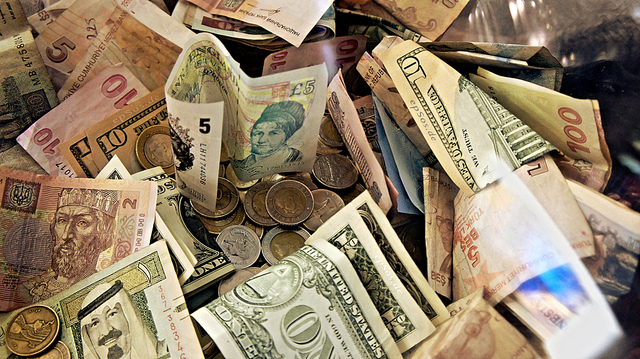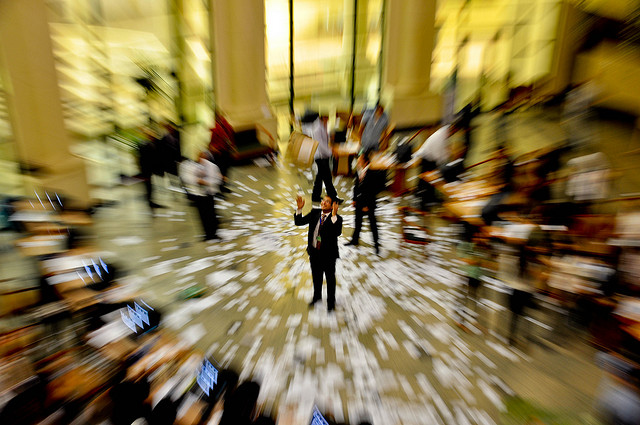For anyone who has spent time on the open sea, especially in a small craft, you know the sea can be quite the moody mistress. Some days, the gale winds are howling. Some days the sea is as smooth as glass. The financial markets are quite similar.
In late August, the U.S. equity market experienced its first 10% price correction in four years. That ended the third longest period in the history of the market without a 10% correction, so in one sense it was long overdue. But, because the U.S. stock market has been as smooth as glass for years now, it feels as if typhoon winds are blowing.
Cycles define the markets' very existence. Unfortunately, cycles also define human decision making within the context of financial markets.
Let's focus on one theme we believe will be enduring and come to characterize financial market outcomes over the next six to 12 months. That theme is currency.
In past missives, we have discussed the importance of global currency movements to real world economic and financial market outcomes. The issue of currency lies at the heart of the recent uptick in financial market "swell" activity. Specifically, the recent correction in U.S. equities began as China supposedly "devalued" its currency, the renminbi, relative to the U.S. dollar.
Before we can look at why relative global currency movements are so important, we need to take a step back. It's simply a fact that individual country economies display different character. They do not grow, or contract, at the same rates. Some have advantages of low-cost labor. Some have the advantage of cheap access to raw materials. Etc. No two are exactly alike.
Historically, when individual countries felt the need to stimulate (not enough growth) or cool down (too much inflation) their economies, they could raise or lower country-specific interest rates. In essence, they could change the cost of money. Interest rates have been the traditional pressure relief valves between various global economies. Hence, decades-long investor obsession with words and actions of central banks such as the U.S. Fed.
Yet we have maintained for some time now that we exist in an economic and financial market cycle unlike any we have seen before. Why? Because there has never been a period in the lifetime of any investor alive today where interest rates in major, developed economies have been set near academic zero for more than half a decade at least. (In Japan, this has been true for multiple decades.) The near-zero rates means that the historical relief valve has broken. It has been replaced by the only relief valve left to individual countries -- relative currency movements.
This brings us back to the apparent cause of the present financial market squall -- the supposed Chinese currency devaluation that began several weeks ago. Let's look at the facts and what is to come.
For some time now, China has wanted its renminbi to be recognized as a currency of global importance -- a reserve currency much like the dollar, euro and yen. For that to happen in the eyes of the International Monetary Fund (IMF), China would need to de-link its currency from the U.S. dollar and allow it to float freely (level to be determined by the market, not by a government or central bank). The IMF was to make a decision on renminbi inclusion in the recognized basket of important global currencies in September. In mid-August, the IMF announced this decision would be put off for one more year as China had more "work to do with its currency." Implied message? China would need to allow its currency to float freely. One week later, China took the step that media reports continue to sensationalize, characterizing China’s action as intentionally devaluing its currency.
In linking the renminbi to the dollar for many years now, China has "controlled" its value via outright manipulation, in a very tight band against the dollar. The devaluation Wall Street has recently focused on is nothing more than China allowing the band in which the renminbi trades against the dollar to widen. With any asset whose value has been fixed, or manipulated, for so long, once the fix is broken, price volatility is a virtual guarantee. This is exactly what has occurred.
China loosened the band by about 4% over the last month, which we believe is the very beginning of China allowing its currency to float freely. This will occur in steps. This is the beginning, not the end, of this process. There is more to come, and we believe this will be a very important investment theme over the next six to 12 months.
What most of the media has failed to mention is that, before the loosening, the renminbi was up 10% against most global currencies this year. Now, it's still up more than 5%, while over the last 12 months the euro has fallen 30% against the U.S. dollar. Not 4%, 30%, and remarkably enough the lights still go on in Europe. Over the last 2 1/2 years, the yen has fallen 35% against the U.S. dollar. Although it may seem hard to believe, the sun still comes up every morning in Japan. What we are looking at in China is economic and financial market evolution. Evolution that will bring change and, we assure you, not the end of the world.
Financial market squalls very often occur when the markets are attempting to "price in" meaningful change, which is where we find ourselves right now.
What heightens current period investor angst is the weight and magnitude of the Chinese economy, second largest on planet Earth behind the U.S. With a devalued currency, China can theoretically buy less of foreign goods. All else being equal, a cheaper currency means less global buying power. This is important in that, at least over the last few decades, China has been the largest purchaser and user of global commodities and industrial materials. Many a commodity price has collapsed over the last year. Although few may realize this, Europe's largest trading partner is not the U.S., it's China. European investors are none too happy about recent relative currency movements.
Relative global currency movements are not without consequence, but they do not spell death and destruction.
A final component in the current market volatility is uncertainty about whether the U.S. Fed will raise interest rates for the first time in more than half a decade. Seriously, would a .25% short-term interest rate vaporize the U.S. economy? Of course not, but if the Fed is the only central bank on Earth possibly raising rates again that creates a unique currency situation. Academically, when a country raises its interest rates in isolation, it makes its currency stronger and more attractive globally. A stronger dollar and weaker Chinese renminbi academically means China can buy less U.S.-made goods. Just ask Caterpillar and John Deere how that has been working out for them lately. Similarly, with a recent drop in Apple's stock price, are investors jumping to the conclusion that Apple's sales in China will fall off of the proverbial cliff? No more new iPhone sales in China? Really?
The issue of relative global currency movements is real and meaningful. The change has been occurring for some time now, especially with respect to the euro and the yen. Now it's the Chinese currency that is the provocateur of global investor angst. Make no mistake about it, China is at the beginning of its loosening of the currency band, not the end. This means relative currency movements will continue to be very important to investment outcomes.
We expect a stronger dollar. That's virtually intuitive. But a stronger dollar is a double-edged sword -- not a major positive for the near-term global economic competitiveness of the U.S., but a huge positive for attracting global capital (drawn to strong currencies). We have seen exactly this in real estate and, to a point, in "blue chip" U.S. equities priced in dollars, for years now.
In addition to a higher dollar, we fully expect a lower Chinese renminbi against the dollar. If we had to guess, at least another 10% drop in the renminbi over next 12 months. Again, the price volatility we are seeing right now is the markets attempting to price in this currency development, much as it priced in the falling euro and yen during years gone by. Therefore, sector and asset class selectivity becomes paramount, as does continuing macro risk control.
Much like a sailor away far too long at sea, the shoreline beckons. We simply need to remember that there is a "price" for being free, and for now that "price" is increased volatility. Without question, relative global currency movements will continue to exert meaningful influence over investment outcomes.
These are the global financial market seas in which we find ourselves.








